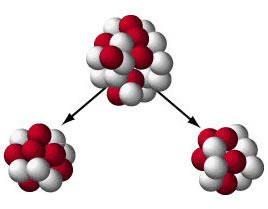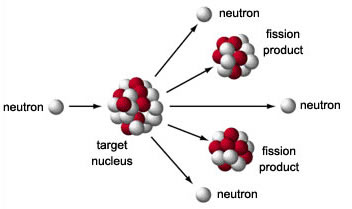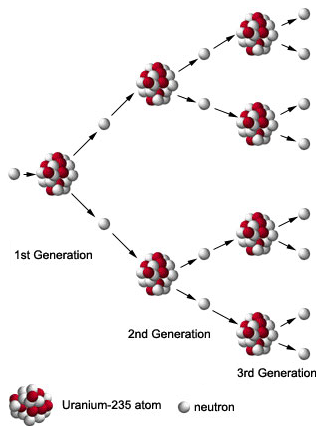Nuclear Fission is the breakup of a large nucleus into two smaller nuclear fragments. Accompanying the break-up of the large nucleus is the release of energy determined by the mass defect.

A model of how the nucleus breaks apart is called the 'liquid-drop' model of the nucleus. An incoming neutron collides with a large nucleus and causes it to become unstable, the large nucleus vibrates like a large water drop and can cause the nucleus to split into two smaller fragments


Even though an incoming neutron can initiate the emission of more than one outgoing neutron, the outgoing neutrons may completely miss other nuclei, therefore, to create a chain reaction, one must increase the probability of hitting other nuclei. To insure that the probability of a neutron colliding with a nuclei, the number of nuclei must be increased, or the density of nuclei must be increased. When there are so many fissile nuclei that chance of initiating a chain reaction is equal to one, we speak of a critical mass
